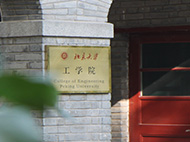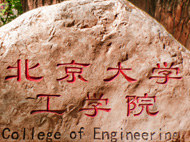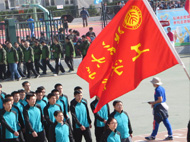主办:材料科学与工程系
报告人:须志刚 高级研究员 北卡罗来纳农工州立大学
时间:4月17日(周三)上午10:00
地点:88858cc永利官网力学楼434会议室
主持人:郑玉峰 教授
报告内容摘要:
One of the potential applications for the Mg-base alloy wires would be sternotomy closure. Conventional sternal wires are typically composed of stainless steel and widely used in fixation of the two halves of the sternum after thoracic surgery that requires bisection of the sternum. Sternal wires range in diameter between 0.7mm and 0.9 mm. In order to hold the two-half bones together tightly to assist the healing process, the wires are wrapped around the bones and the two ends of each wire are twisted together. The procedure requires the wire to withstand torsional stress without breaking or stretching. Although sternal separation or dehiscence is a rare complication of median sternotomy (0.5–2.5%), it carries a mortality rate of between 10 and 40%. Sternal instability, wound infection, osteomyelitis and dehiscence are related. The most important factor in preventing sternal dehiscence and mediastinitis is a stable sternal approximation. Dehiscence often occurs within the first two weeks postoperatively, before bone healing is significant. Sternal dehiscence can a result of wire untwisting or breaking, or from the wire cutting into the bone.
The major challenge for the Mg-alloy wires will be their strength and ductility, in addition to the corrosion resistance for this application. Mg-alloys are not as strong as stainless steels. However, the strength of Mg-alloys can be improved by alloying, thermal and thermomechanical treatments. Mg is in hexagonally close-packed structure (HCP). It has only three independent slip systems all on the (0 0 0 1) basal plane, which is less than the five independent slip systems required for uniform deformation. The possible methods to improve the ductility of Mg-alloys are microstructural adjustment and grain refinement through alloying and thermal and thermomechanical treatments.
In this communication, we focused on the effects of alloying, mechanical processing, and annealing on the development of microstructure, mechanical performance of the Mg-alloy wires. These technologies for the sternum wires can also be used to develop wires as bone nails, k-wires and other bone closures.
报告人简介:
须志刚博士为美国北卡罗来纳农工州立大学革命性金属生物材料国家工程研究中心的高级研究员。带领镁合金研究团队,准对医疗器械对生物降解、机械性能的要求,从事新型镁合金的研发。从镁合金成分设计,变形加工,热处理等方面,研究影响镁合金强度,塑性,生物降解性能的机理,并开发出多种高强度,中高塑性,高耐腐蚀性的镁合金用于器件试验。









